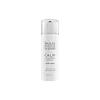What's inside
What's inside
 Key Ingredients
Key Ingredients

 Benefits
Benefits

 Concerns
Concerns

No concerns
 Ingredients Side-by-side
Ingredients Side-by-side

Water
Skin ConditioningGlycerin
HumectantHyaluronic Acid
HumectantBeta-Glucan
Skin ConditioningSea Whip Extract
Skin ConditioningSodium Hyaluronate
HumectantCeramide NP
Skin ConditioningCeramide AP
Skin ConditioningCeramide EOP
Skin ConditioningCholesterol
EmollientGlycyrrhiza Glabra Root Extract
BleachingEpilobium Angustifolium Flower/Leaf/Stem Extract
Skin ConditioningPhytosphingosine
Skin ConditioningSodium Cocoyl Amino Acids
CleansingChrysanthemum Parthenium Flower Extract
Skin ConditioningGlycine Soja Seed Extract
Skin ConditioningUbiquinone
AntioxidantSodium Lauroyl Lactylate
EmulsifyingCaprylic/Capric Triglyceride
MaskingMagnesium Aspartate
Skin ConditioningPotassium Aspartate
Skin ConditioningSarcosine
Skin ConditioningXanthan Gum
EmulsifyingCarbomer
Emulsion StabilisingPolysorbate 20
EmulsifyingPEG/PPG-14/4 Dimethicone
EmulsifyingDisodium EDTA
Ethylhexylglycerin
Skin ConditioningPhenoxyethanol
PreservativeWater, Glycerin, Hyaluronic Acid, Beta-Glucan, Sea Whip Extract, Sodium Hyaluronate, Ceramide NP, Ceramide AP, Ceramide EOP, Cholesterol, Glycyrrhiza Glabra Root Extract, Epilobium Angustifolium Flower/Leaf/Stem Extract, Phytosphingosine, Sodium Cocoyl Amino Acids, Chrysanthemum Parthenium Flower Extract, Glycine Soja Seed Extract, Ubiquinone, Sodium Lauroyl Lactylate, Caprylic/Capric Triglyceride, Magnesium Aspartate, Potassium Aspartate, Sarcosine, Xanthan Gum, Carbomer, Polysorbate 20, PEG/PPG-14/4 Dimethicone, Disodium EDTA, Ethylhexylglycerin, Phenoxyethanol
Water
Skin ConditioningGlycerin
HumectantCaprylic/Capric Triglyceride
MaskingSqualane
EmollientSimmondsia Chinensis Seed Oil
EmollientHydrogenated Lecithin
EmulsifyingHelianthus Annuus Seed Oil
EmollientCannabidiol - Synthetically Produced
AntioxidantCannabis Sativa Seed Oil
EmollientBorago Officinalis Seed Oil
EmollientCentella Asiatica Extract
CleansingLimnanthes Alba Seed Oil
Skin ConditioningLinum Usitatissimum Seed Oil
PerfumingLupinus Albus Seed Oil
Skin ConditioningPhospholipids
Skin ConditioningSodium Hyaluronate
HumectantLecithin
EmollientTocopherol
AntioxidantSodium PCA
HumectantPanthenol
Skin ConditioningSodium Phytate
Tocopheryl Acetate
AntioxidantXanthan Gum
EmulsifyingGlyceryl Stearate Citrate
EmollientPolyglyceryl-3 Stearate
EmulsifyingPullulan
Sclerotium Gum
Emulsion StabilisingHexylene Glycol
EmulsifyingPhenoxyethanol
PreservativeCaprylyl Glycol
EmollientEthylhexylglycerin
Skin ConditioningWater, Glycerin, Caprylic/Capric Triglyceride, Squalane, Simmondsia Chinensis Seed Oil, Hydrogenated Lecithin, Helianthus Annuus Seed Oil, Cannabidiol - Synthetically Produced, Cannabis Sativa Seed Oil, Borago Officinalis Seed Oil, Centella Asiatica Extract, Limnanthes Alba Seed Oil, Linum Usitatissimum Seed Oil, Lupinus Albus Seed Oil, Phospholipids, Sodium Hyaluronate, Lecithin, Tocopherol, Sodium PCA, Panthenol, Sodium Phytate, Tocopheryl Acetate, Xanthan Gum, Glyceryl Stearate Citrate, Polyglyceryl-3 Stearate, Pullulan, Sclerotium Gum, Hexylene Glycol, Phenoxyethanol, Caprylyl Glycol, Ethylhexylglycerin
 Reviews
Reviews

Ingredients Explained
These ingredients are found in both products.
Ingredients higher up in an ingredient list are typically present in a larger amount.
This ingredient is an emollient, solvent, and texture enhancer. It is considered a skin-softener by helping the skin prevent moisture loss.
It helps thicken a product's formula and makes it easier to spread by dissolving clumping compounds.
Caprylic Triglyceride is made by combining glycerin with coconut oil, forming a clear liquid.
While there is an assumption Caprylic Triglyceride can clog pores due to it being derived from coconut oil, there is no research supporting this.
Learn more about Caprylic/Capric TriglycerideEthylhexylglycerin (we can't pronounce this either) is commonly used as a preservative and skin softener. It is derived from glyceryl.
You might see Ethylhexylglycerin often paired with other preservatives such as phenoxyethanol. Ethylhexylglycerin has been found to increase the effectiveness of these other preservatives.
Glycerin is already naturally found in your skin. It helps moisturize and protect your skin.
A study from 2016 found glycerin to be more effective as a humectant than AHAs and hyaluronic acid.
As a humectant, it helps the skin stay hydrated by pulling moisture to your skin. The low molecular weight of glycerin allows it to pull moisture into the deeper layers of your skin.
Hydrated skin improves your skin barrier; Your skin barrier helps protect against irritants and bacteria.
Glycerin has also been found to have antimicrobial and antiviral properties. Due to these properties, glycerin is often used in wound and burn treatments.
In cosmetics, glycerin is usually derived from plants such as soybean or palm. However, it can also be sourced from animals, such as tallow or animal fat.
This ingredient is organic, colorless, odorless, and non-toxic.
Glycerin is the name for this ingredient in American English. British English uses Glycerol/Glycerine.
Learn more about GlycerinPhenoxyethanol is a preservative that has germicide, antimicrobial, and aromatic properties. Studies show that phenoxyethanol can prevent microbial growth. By itself, it has a scent that is similar to that of a rose.
It's often used in formulations along with Caprylyl Glycol to preserve the shelf life of products.
Sodium Hyaluronate is hyaluronic acid's salt form. It is commonly derived from the sodium salt of hyaluronic acid.
Like hyaluronic acid, it is great at holding water and acts as a humectant. This makes it a great skin hydrating ingredient.
Sodium Hyaluronate is naturally occurring in our bodies and is mostly found in eye fluid and joints.
These are some other common types of Hyaluronic Acid:
Learn more about Sodium HyaluronateWater. It's the most common cosmetic ingredient of all. You'll usually see it at the top of ingredient lists, meaning that it makes up the largest part of the product.
So why is it so popular? Water most often acts as a solvent - this means that it helps dissolve other ingredients into the formulation.
You'll also recognize water as that liquid we all need to stay alive. If you see this, drink a glass of water. Stay hydrated!
Learn more about WaterXanthan gum is used as a stabilizer and thickener within cosmetic products. It helps give products a sticky, thick feeling - preventing them from being too runny.
On the technical side of things, xanthan gum is a polysaccharide - a combination consisting of multiple sugar molecules bonded together.
Xanthan gum is a pretty common and great ingredient. It is a natural, non-toxic, non-irritating ingredient that is also commonly used in food products.
Learn more about Xanthan Gum